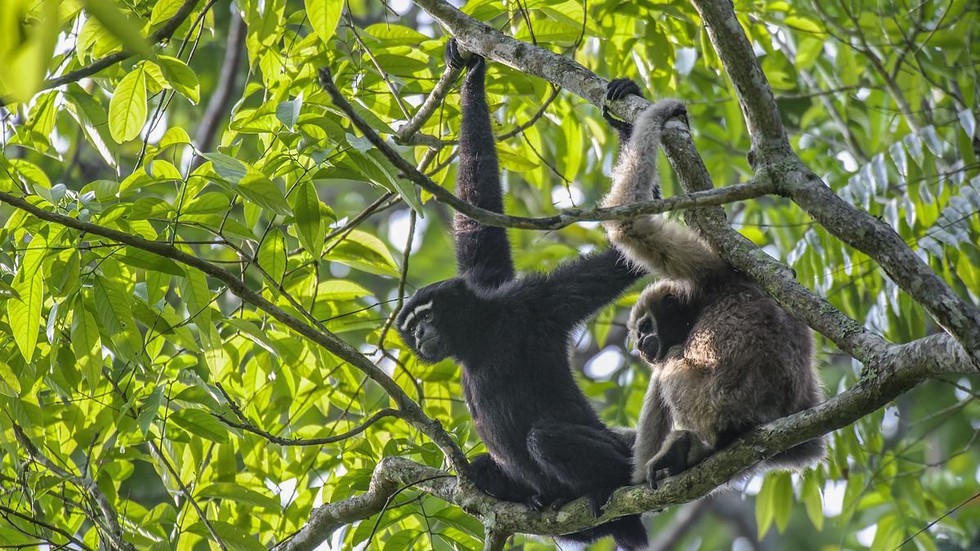About Hollongapar Gibbon Wildlife Sanctuary:
- It is located in the Jorhat district of Assam, India.
- It is the only sanctuary in India named after a gibbon due to its distinction for containing the densest gibbon populations in Assam.
- It is situated at an altitude between 100 and 120 m (330 and 390 ft), the topography gently slopes downward from southeast to northwest.
- The Bhogdoi River creates a waterlogged region dominated by semi-hydrophytic plants along the border of the sanctuary.
- Flora:
- The upper canopy of the forest is dominated by the Hollong tree, while the Nahar dominates the middle canopy.
- The lower canopy consists of evergreen shrubs and herbs.
- Fauna:
- It contains India’s only gibbons–the hoolock gibbons, and Northeastern India’s only nocturnal primate–the Bengal slow loris.
- Also found at the sanctuary are Indian elephants, tigers, leopards, jungle cats, wild boar, three types of civet, four types of squirrels, stump-tailed macaque, northern pig-tailed macaque, etc.
National Board for Wildlife:
- It was constituted by the Central Government under Section 5 A of the Wildlife (Protection) Act, 1972 (WLPA).
- The WLPA mandates that without the approval/recommendation of the NBWL, construction of tourist lodges, alteration of the boundaries of PAs, destruction or diversion of wildlife habitat and de-notification of Tiger Reserves, cannot be done.
- It is a 47-member committee, headed by the Prime Minister and the Minister of Environment, Forest, and Climate Change (environment minister) as vice chairperson.
